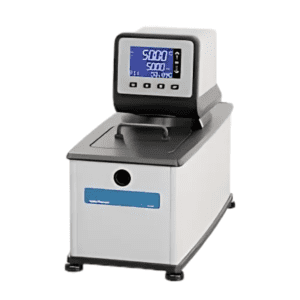Microscopes
Description
Microscopes are indispensable instruments in scientific, medical, and industrial applications, providing high-powered magnification to observe samples at the microscopic level. From biological specimens to materials analysis, microscopes offer clarity and precision, enabling accurate study and research across various fields.
Types of Microscopes:
- Compound Microscopes:
These are the most common type of microscope, featuring multiple objective lenses for various levels of magnification. Compound microscopes are primarily used for observing small biological samples like cells, tissues, and microorganisms.
Applications: Cell observation, microbiology, histology, and clinical diagnostics.
- Stereo Microscopes:
Also known as dissecting microscopes, stereo microscopes provide low magnification and a 3D view of larger objects. They are ideal for examining specimens that require more depth and surface detail, such as insects, circuit boards, and small mechanical parts.
Applications: Material analysis, electronics inspection, and dissection.
- Electron Microscopes:
Electron microscopes provide extremely high magnification using electron beams instead of light. They are capable of viewing objects at the atomic level, offering ultra-high-resolution images for advanced research.
Applications: Nanotechnology, semiconductor research, and detailed biological studies.
- Confocal Microscopes:
Confocal microscopes use laser scanning technology to produce high-resolution 3D images of samples, making them ideal for live cell imaging and detailed study of complex structures.
Applications: Cell biology, fluorescence microscopy, and molecular research.
Key Features:
- Magnification Power: Microscopes are available with varying magnification powers, ranging from basic models (up to 1000x) to advanced electron microscopes (millions of times magnification).
- Illumination: Different illumination techniques, including LED, fluorescent, and halogen light, enhance the clarity of images depending on the sample type.
- Optical Lenses: The quality of lenses plays a crucial role in the clarity and sharpness of the magnified image, with high-end microscopes offering advanced optics for detailed observation.
- Adjustable Focus: Precision focus control ensures clear and sharp images at various magnifications, offering flexibility for different types of samples.
Applications:
Biological Research: Microscopes are essential for studying cells, tissues, microorganisms, and other biological specimens, playing a crucial role in medical and biological research.
Medical and Clinical Use: In medical diagnostics, microscopes are used for analyzing blood samples, identifying pathogens, and conducting other critical examinations.
Industrial Applications: Microscopes are widely used in quality control, materials analysis, and electronics inspection, where high magnification is needed for detecting defects and examining small components.
Forensic Science: In forensic labs, microscopes are used to examine evidence, such as hair samples, fibers, and particles, crucial for criminal investigations.
Benefits:
- Increased Accuracy: By providing detailed views of microscopic structures, microscopes allow for precise analysis and informed decision-making in research, diagnostics, and industrial processes.
- Versatility: Different types of microscopes can be used for a wide range of applications, from biological to material sciences, ensuring comprehensive analysis capabilities.
- Advanced Technology: With features like high-resolution imaging, digital cameras, and software integration, modern microscopes enable enhanced observation, analysis, and documentation.
Maintenance and Safety Tips:
- Regular Cleaning: Keep the lenses clean to prevent dust or oil from affecting the quality of the images. Use a microfiber cloth and lens cleaning solution specifically designed for optical instruments.
- Proper Handling: Always handle the microscope with care, especially the lenses and the stage, to prevent damage. Store the microscope in a safe, dust-free location.
- Calibrate and Maintain: Ensure the microscope is regularly calibrated for accurate results, particularly when switching between objective lenses or using advanced imaging techniques.
Conclusion:
Microscopes are vital tools in many fields, enabling precise examination of small objects for scientific, medical, and industrial research. Whether you’re studying microorganisms, conducting medical diagnostics, or inspecting materials, a microscope provides the magnification and clarity needed for detailed analysis and accurate results.





